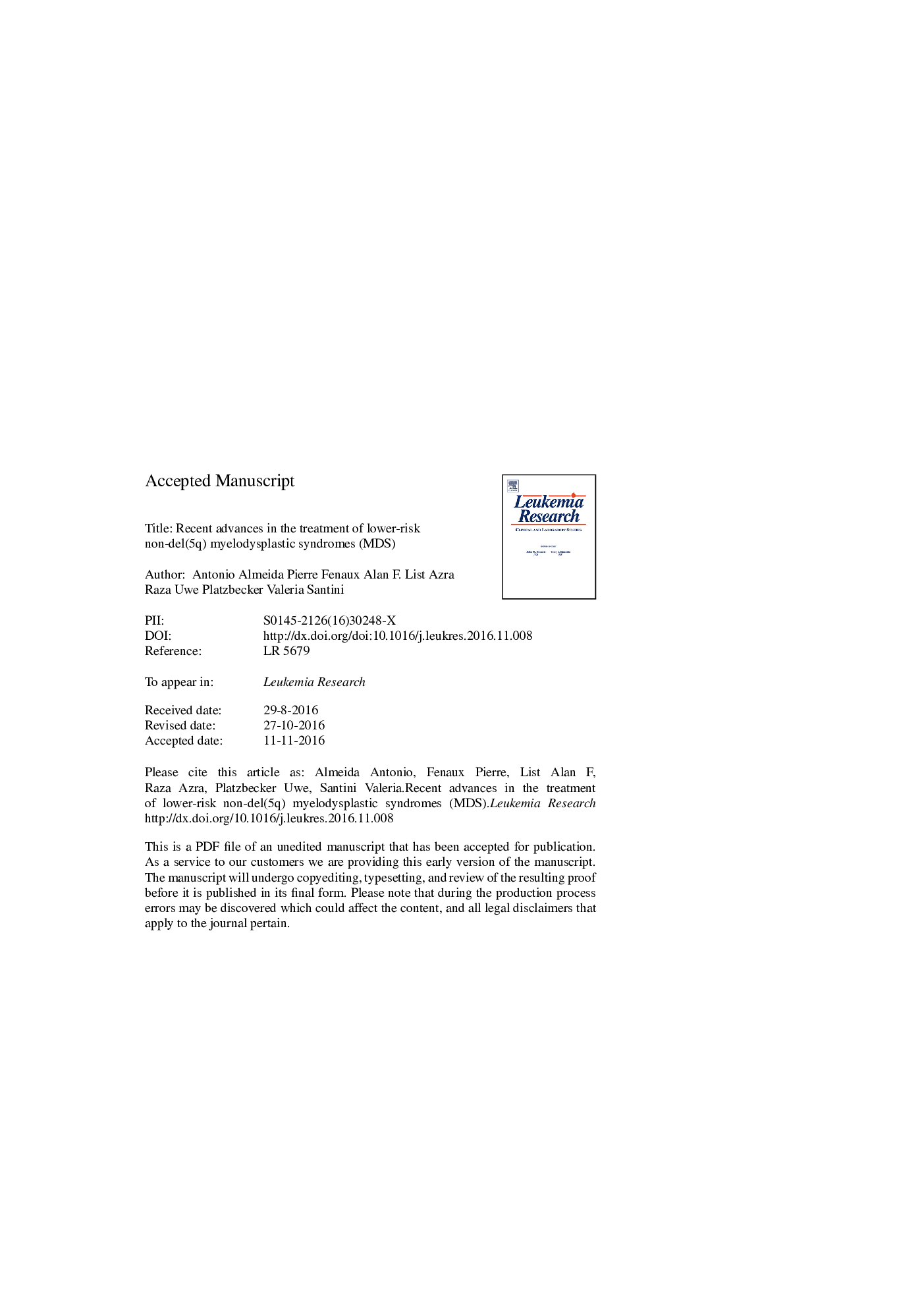| Article ID | Journal | Published Year | Pages | File Type |
|---|---|---|---|---|
| 5527926 | Leukemia Research | 2017 | 37 Pages |
Abstract
Patients with lower-risk myelodysplastic syndromes (MDS) are affected primarily by symptoms of chronic anemia and fatigue rather than progression to acute myeloid leukemia. Severe thrombocytopenia, although less common in lower-risk MDS, is associated with increased risk of bleeding. For anemic patients, the principal aim of treatment is to improve anemia and decrease red blood cell transfusions. For transfusion-dependent patients with lower-risk MDS without chromosome 5q deletion [non-del(5q) MDS], there are limited effective treatments. Erythropoiesis-stimulating agents (ESAs) are generally first-line therapy, yielding frequent responses with a median duration of 18-24 months. Immunosuppressive therapy or allogeneic stem cell transplantation are restricted to select patients. New strategies for ESA-refractory or relapsed patients include lenalidomide, alone or in combination with ESAs; oral azacitidine; and new molecules such as the activin receptor type II ligand traps luspatercept and sotatercept. In thrombocytopenic patients, thrombopoietin receptor agonists are under evaluation. While trials to evaluate these treatment strategies are underway, efforts are needed to optimize therapies through better patient selection and response prediction as well as integrating molecular and genetic data into clinical practice. We provide an overview of current treatment approaches for lower-risk non-del(5q) MDS and explore promising directions for future research.
Related Topics
Life Sciences
Biochemistry, Genetics and Molecular Biology
Cancer Research
Authors
Antonio Almeida, Pierre Fenaux, Alan F. List, Azra Raza, Uwe Platzbecker, Valeria Santini,
